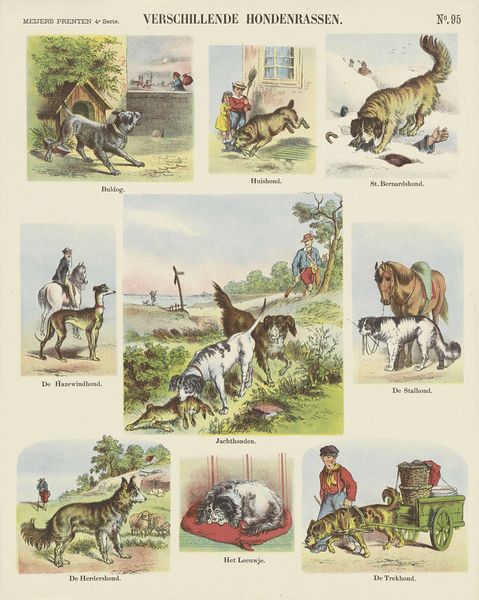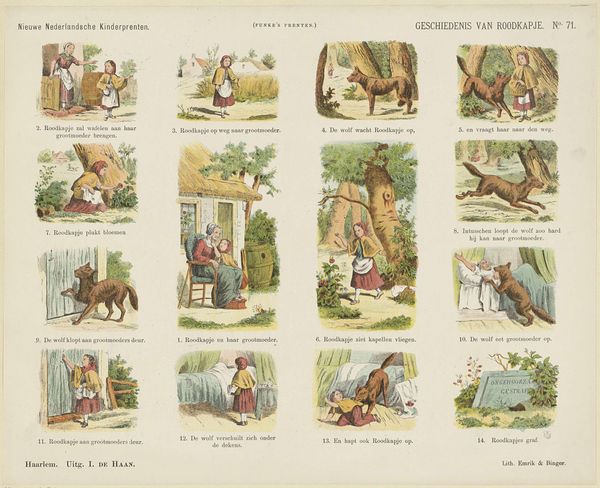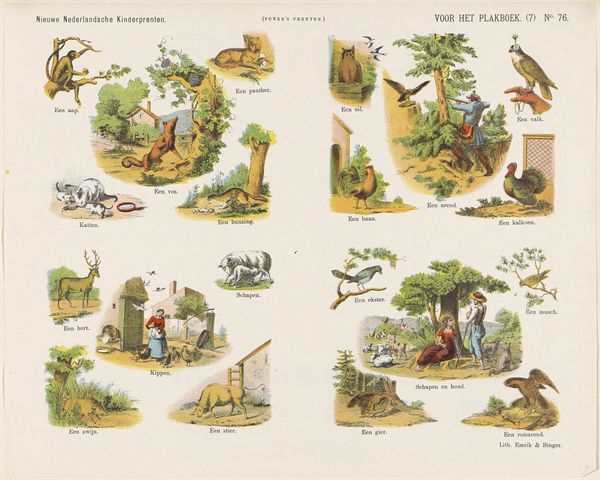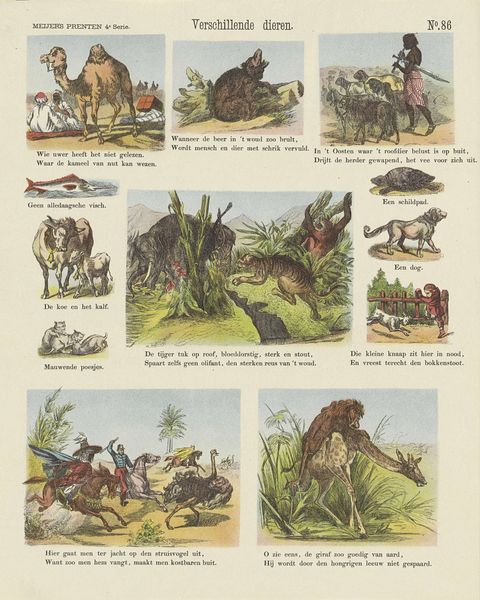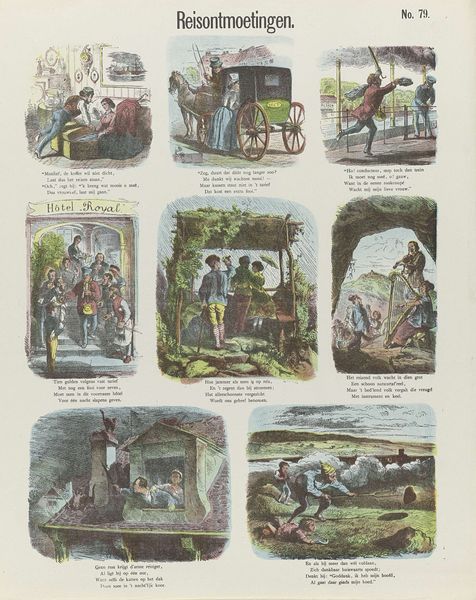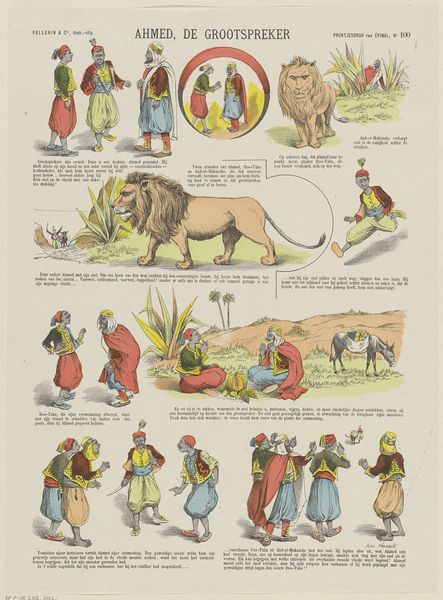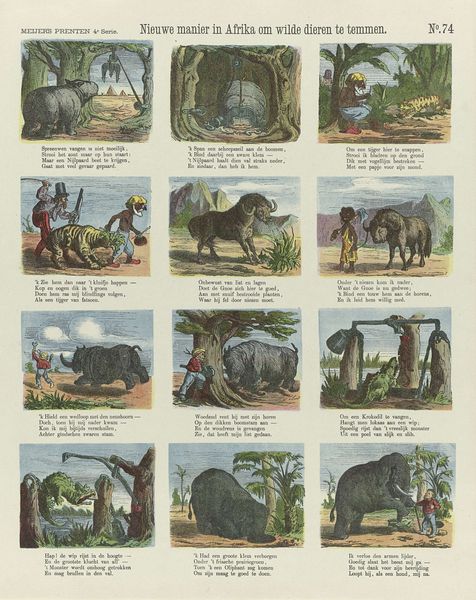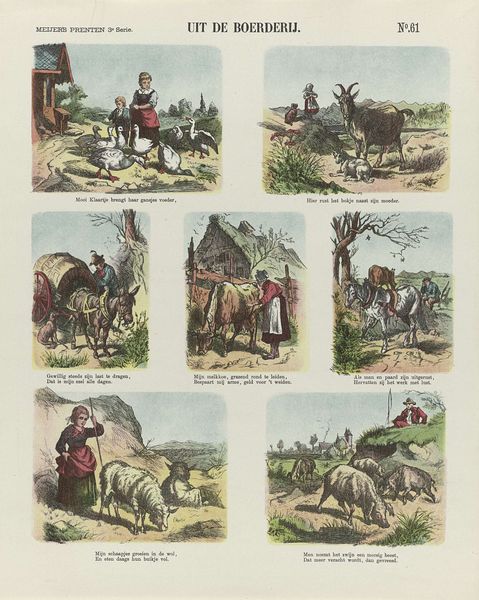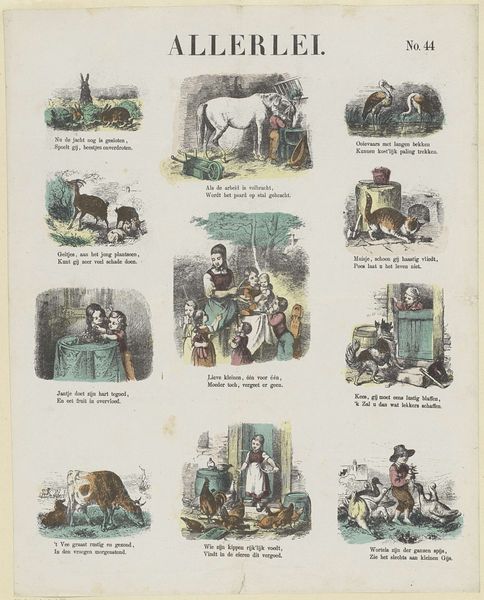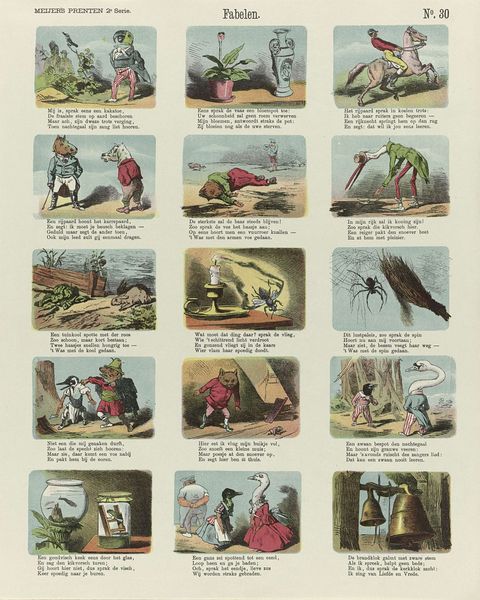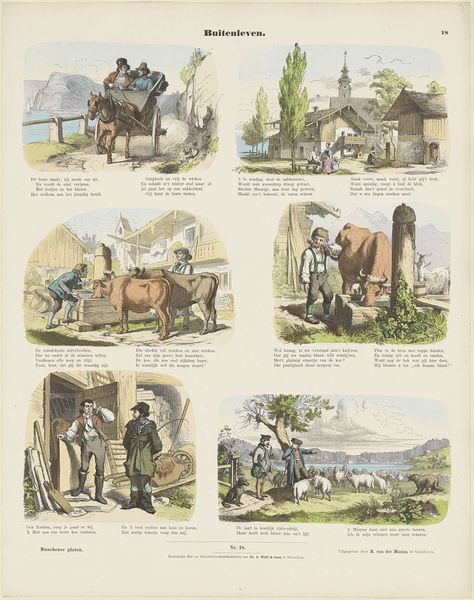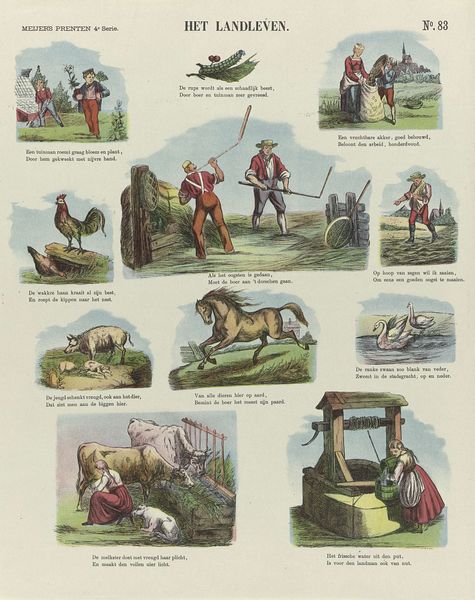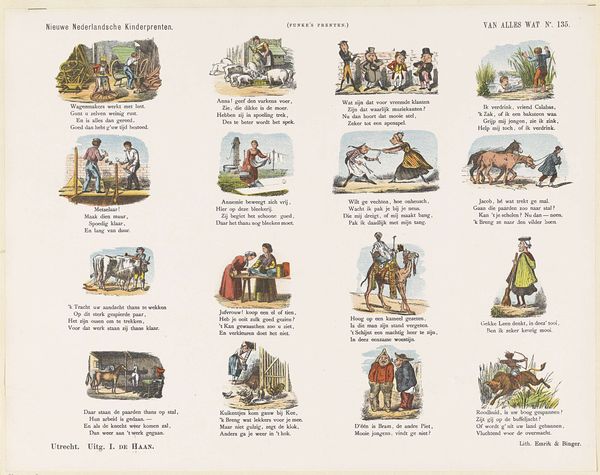
Dimensions: height 429 mm, width 344 mm
Copyright: Rijks Museum: Open Domain
Curator: Here we have "Op het land", or "In the Country" by De Ruyter & Meijer, dating back to 1878. It’s a charming lithograph. What's your first take? Editor: It feels… pastoral. Like a sampler of rural life. There's a certain order and precision to each little scene. Didactic, perhaps? Curator: Absolutely. The entire work feels like an idealized educational print aimed at children, perhaps. The selection of animals, from horses and fowl to snails and butterflies, evokes a sense of curiosity and respect for nature. Editor: You see that immediately in the medium. Lithography allowed for mass production and wide distribution, putting affordable images like these in classrooms and homes to convey a specific vision of agrarian life and values. It connects directly to the economy of printmaking, disseminating not just images but also ideologies. Curator: Ideologies certainly in place. Romanticized notions of family picking apples, a mare lovingly nursing her foal, plump ducks in the stream – a very rose-tinted lens on the natural world, wouldn't you agree? Yet there's something touching about its naive rendering. It wants to instill a gentleness towards animals. I feel a childlike longing looking at it. Editor: While I appreciate that, it's impossible to ignore the social construction at play. The work elevates agricultural life, presenting a picture of wholesome labor detached from the actual realities of rural economies. There are people in idealized dress collecting food, but all means of labor, except picking, is ignored. It reminds us of art's role in shaping narratives about the working classes. Curator: You make an excellent point. We yearn for something authentic when maybe the 'authentic' itself is just a construct layered with assumptions and wishful thinking. Still, despite it being such a simplified worldview, the skill behind it – arranging those multiple panels so harmoniously -is really delightful. It reminds me of a well-ordered garden! Editor: Agreed. There's craft in how it normalizes certain social relations through the labor it showcases... and also that it doesn't. And while a simple object on the surface, its function, and materiality underscore the powerful links between art, pedagogy, and social order. Curator: It definitely asks important questions. Maybe this idealized version served some important function, nurturing empathy where it lacked, even if the context feels overly selective to us now. Editor: Precisely. By considering the materiality and social context, we gain a deeper appreciation of the visual, economic, and cultural history behind an ostensibly simple print.
Comments
No comments
Be the first to comment and join the conversation on the ultimate creative platform.
